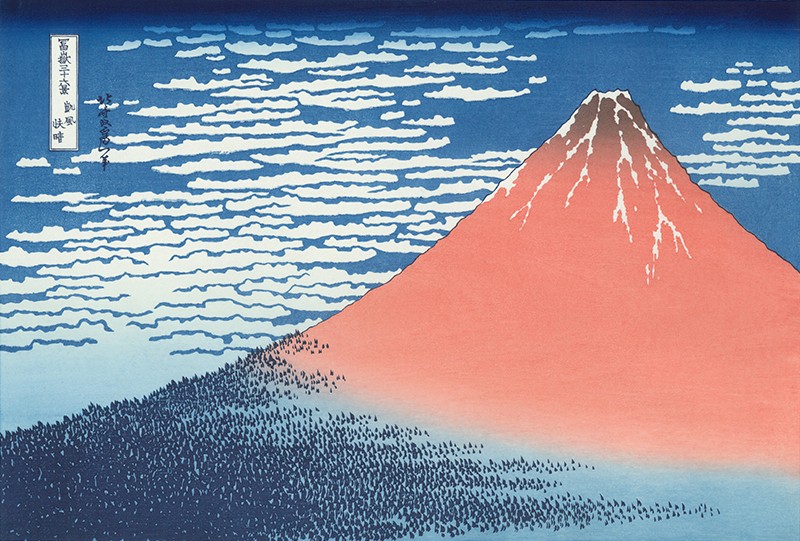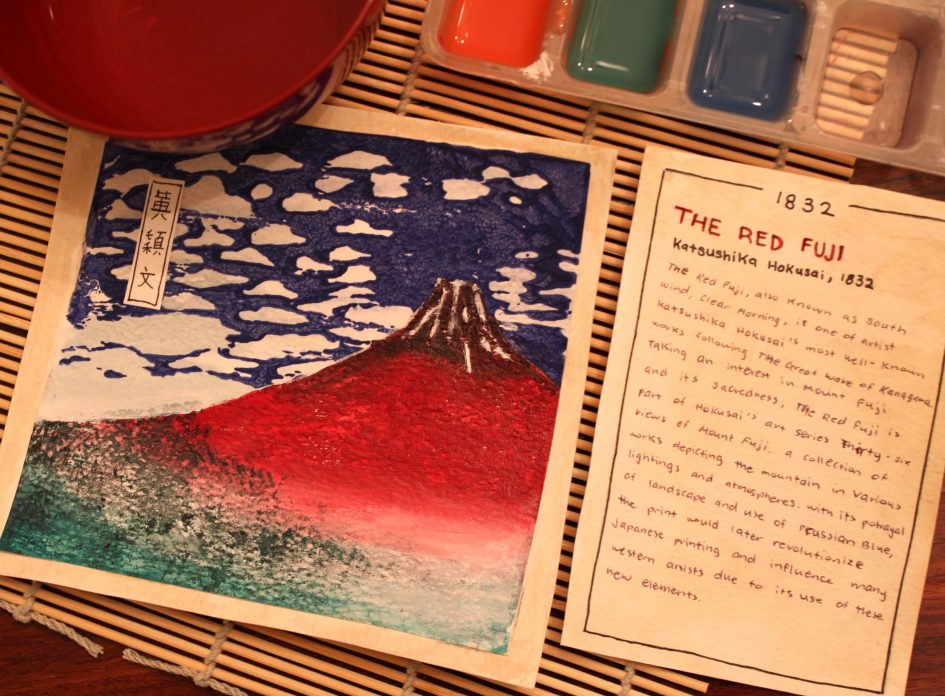Throughout the past few lectures, the visuals that always stood out to me were the Japanese Ukiyo-e prints. I have always been drawn to its unique style and minimalistic approach in creating flat colours and images. Due to this reason, for my artifact project, I wanted to explore this topic further and emulate the techniques used to create these patterns.
While researching and searching for images, I was particularly drawn to the landscape prints created by Ukiyo-e artist Katsushika Hokusai in his Thirty-Six Views of Mount Fuji art series. Though I thought these prints were interesting to look at, they were all quite detailed, and due to the time constraint, I wanted to recreate a design that was simple and more time-friendly; thus, I settled on the Red Fuji print.
References




Instead of using wood to create the woodblock as Hokusai had done on the original print, I opted for styrofoam and acrylic paint to imitate the woodblock printing. This was due to a lack of supplies and also a lack of experience in wood carving, however, the result still turned out successful. I first measured out the size of the styrofoam and collected the pieces that I needed for each element of the work. After that, I used the tip of a pencil to scratch out the areas where I wanted white space. I then applied paint onto the surface of the stencils and began pressing it onto the paper and layering the different elements on top. While the technique did work in transferring pigment onto the paper, I had to go over the mountain again with paint as it was not opaque as I had wanted. Despite this, the results were successful, and the styrofoam was close to imitating the woodblock printing technique to a certain extent.
For the photograph, I wanted to capture the environment of the printmaking process, thus I placed a bowl of water with a panel of ink to recreate a similar atmosphere of printmaking. I also decided to write the brief on a scroll, as this is an element that can be seen in many Japanese prints, and I wanted it to be as authentic as possible to the artifact. I had also written my Chinese name on the side of the print to further recreate that authenticity.
Overall I spent around 10 hours researching and completing this project, and I had a lot of fun learning from a more hands-on approach. I would give myself a 9 out of 10 for my artifact as I was able to achieve the desired outcomes. However, because I had to go back and repaint the area after printing, I would knock a point off for not being 100% authentic to the printing technique.
Sources
DeskX, et al. “The Unique History and Exquisite Aesthetic of Japan’s Ethereal Woodblock Prints.” My Modern Met, 28 Sept. 2020, https://mymodernmet.com/ukiyo-e-japanese-woodblock-prints/.
“Frame: Work: Fuji in Clear Weather (Red Fuji) by Katsushika Hokusai.” FAMSF, 30 Aug. 2011, https://www.famsf.org/blog/framework-fuji-clear-weather-red-fuji-katsushika-hokusai.
“Hokusai.” Encyclopædia Britannica, Encyclopædia Britannica, Inc., https://www.britannica.com/biography/Hokusai#ref131790.
The History of Ukiyo-e and Its Expansion around the World |, https://www.kumon-ukiyoe.jp/en/history.php.
“Ukiyo-e.” Encyclopædia Britannica, Encyclopædia Britannica, Inc., https://www.britannica.com/art/ukiyo-e.
“Under the Wave off Kanagawa (The Great Wave) by Hokusai (Article).” Khan Academy, Khan Academy, https://www.khanacademy.org/humanities/ap-art-history/south-east-se-asia/japan-art/a/hokusai-under-the-wave-off-kanagawa-the-great-wave.

Leave a Reply